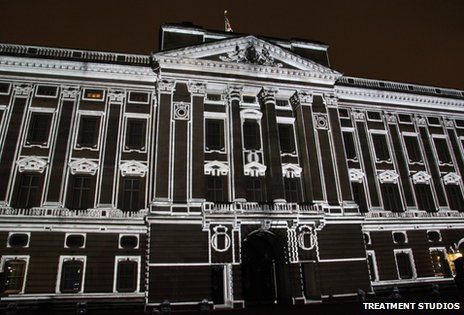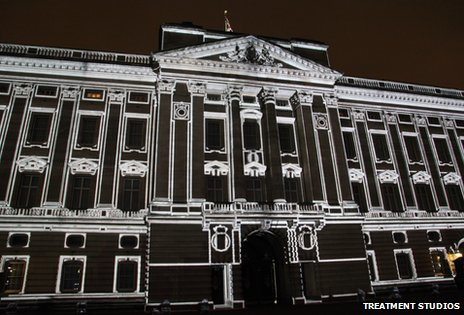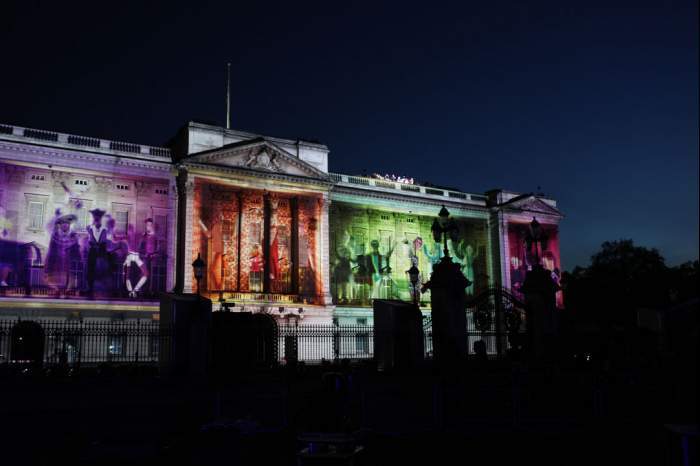
BBC Explainer On Projection Mapping Buckingham Palace
June 8, 2012 by Dave Haynes
If you like 3D projection mapping – beaming interesting visuals on to surfaces like churches, castles and opera houses – but were wondering how the hell they do it, this BBC piece about the Buckingham Palace job earlier this week is useful.
It describes how a small London company, Treatment, turned the palace into social housing as part of the Queen’s jubilee concert.
It was Sam Pattinson who masterminded the palace projections, and coordinated the other contributors, including Trunk Animation which made the Madness Our House films. Sam told me that projection mapping – the technology involved in mapping the surface of the palace so precisely and then making it appear to come alive – had come a long way in recent years. “You’re able to make a building appear to come crumbling down” he explained, “but we decided not to try that with the palace.”
Sam and his team only began work in earnest three weeks ago. They arrived at the palace with a Lidar laser scanner, and after placing hundreds of reflective holographic markers on the building, generated a 3D model of the building.
Then, using systems from another London company, D3 Technologies, they set about working out how to map the images commissioned from the animators onto the template generated by the 3D scan. First, they worked on the virtual palace in the studio, and then, from the Wednesday before the concert, the team turned up to practice on the real thing.
“We were there from 10 at night until four in the morning,” Sam explains. Night after night, using 36 projectors in six blocks of six, they rehearsed – without disturbing the occupants or giving too much away to passers-by. “We put up window mesh so lights didn’t shine inside, and obscured parts of each image so you couldn’t really piece it together.”





Leave a comment